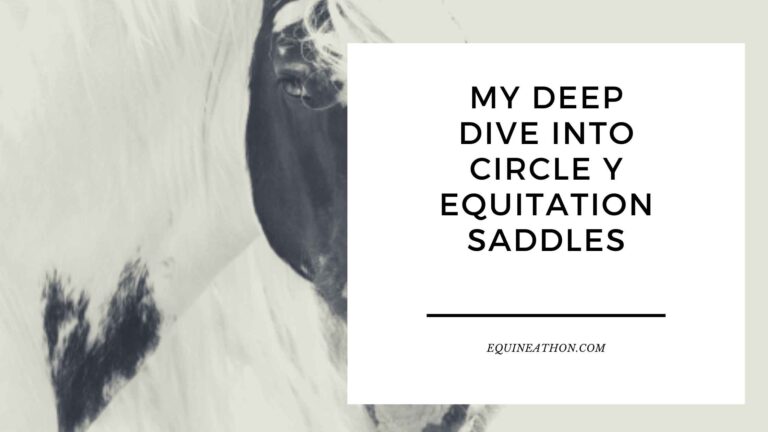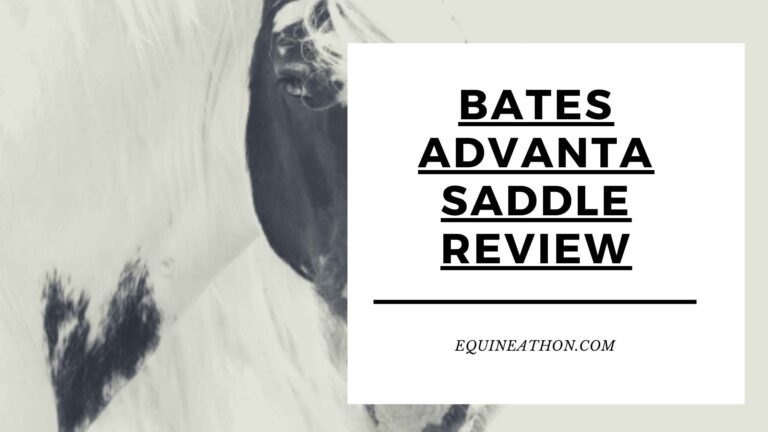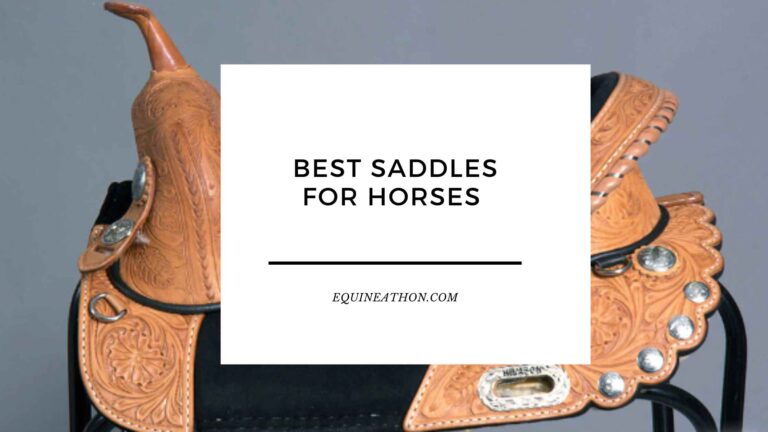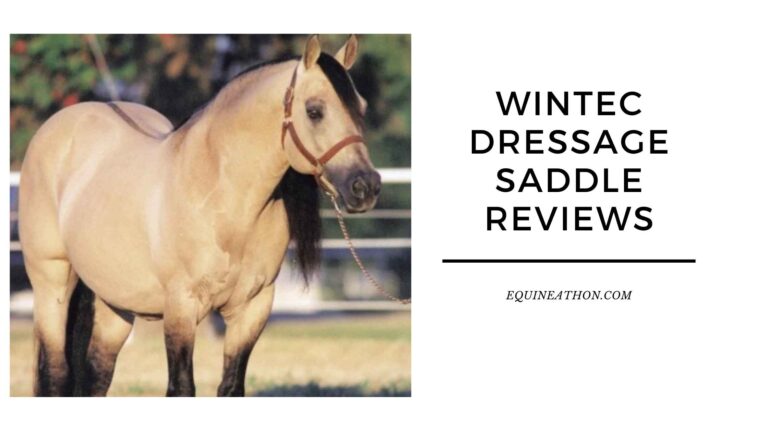The Best Saddles for High Withered Horses
There I was, standing in the middle of the stable, staring at my beautiful horse with those pronounced withers that made saddle fitting seem like an endless challenge. As many horse enthusiasts would know, the shape and contour of a horse’s back play a pivotal role in choosing the right saddle. For horses with high withers, it’s even more crucial. The wrong choice could lead to discomfort, pressure sores, or even injury.
The best saddles for high-withered horses are those that offer a cutback design or a high gullet, ensuring there’s no pressure on the withers. Brands like Thorowgood, Bates, and Wintec often come highly recommended.
Understanding High Withers
High withers aren’t just an aesthetic feature; they’re a testament to a horse’s unique anatomy. Withers are the ridge between the shoulder blades of a horse, and when they’re pronounced or high, they can pose challenges in saddle fitting. The key is to ensure that the saddle doesn’t press or rub against the withers, which can cause discomfort or injury.
Exploring the Best Saddles
- Thorowgood T8 High Wither Dressage Saddle (Click to Buy on Ebay):
Known for its specialized design, this saddle is crafted with high-withered horses in mind. Its adjustable gullet system ensures a custom fit, and the synthetic materials make it lightweight and easy to maintain. - Bates All-Purpose Saddle (Click to Buy on Ebay):
Bates saddles are known for their innovative designs and the use of quality materials. Their all-purpose model features an adjustable Flexibloc system and the CAIR cushion system, offering optimal comfort and fit for high-withered horses. - Wintec 500 High Wither All-Purpose Saddle:
Another favorite among equestrians, Wintec’s 500 series with high wither design ensures a snug fit without compromising on comfort. Its durable synthetic material is weather-resistant and easy to clean. - Passier Compact Dressage Saddle (Click to Buy on Ebay):
Passier is a brand that stands synonymous with quality. Their Compact Dressage Saddle offers a shorter contact area, making it ideal for horses with pronounced withers and shorter backs.
Tips for Fitting a Saddle to High-Withered Horses
- Professional Assessment: Always get a professional saddle fitter to assess your horse’s back and recommend the best fit.
- Padding Matters: Use a wither relief pad to ensure additional protection and comfort for your horse.
- Regular Checks: Frequently check for signs of discomfort or rubbing. Adjust the saddle or padding as necessary.
- Stay Updated: Just like us, horses change with age. Their musculature and back shape can shift, so it’s essential to reassess saddle fit periodically.
In conclusion, while high withers can pose a saddle-fitting challenge, it’s by no means an insurmountable one. With the right saddle, regular checks, and a bit of attention to detail, your high-withered horse can enjoy rides as comfortably as any other.
It’s all about understanding their unique needs and addressing them with care and knowledge.
ALSO SEE: How Much Does a Saddle Weigh?
FAQs: Best Saddles for High-Withered Horses
- What are high withers on a horse?
High withers are the pronounced ridge between the shoulder blades of a horse. - Why is saddle fitting important for high-withered horses?
The wrong saddle can press or rub against the withers, leading to discomfort or injury. - Which brands offer saddles suitable for high-withered horses?
Thorowgood, Bates, and Wintec are some brands that come highly recommended. - What’s unique about the Thorowgood T8 High Wither Dressage Saddle?
It’s crafted specifically for high-withered horses and features an adjustable gullet system. - Why is Bates considered a good brand for saddles?
Bates saddles are known for innovative designs and use of quality materials. - What features does the Bates All-Purpose Saddle offer?
It features an adjustable Flexibloc system and the CAIR cushion system for comfort. - How is Wintec’s 500 series beneficial for high-withered horses?
It offers a high wither design ensuring a snug fit without compromising comfort. - Is synthetic material good for saddles?
Yes, synthetic materials can be lightweight, easy to maintain, and weather-resistant. - What makes the Passier Compact Dressage Saddle stand out?
It offers a shorter contact area, making it ideal for horses with pronounced withers and shorter backs. - Why should I get a professional saddle assessment?
A professional can accurately assess your horse’s back and recommend the best saddle fit. - What is a wither relief pad?
It’s a pad used under the saddle to ensure additional protection and comfort for the horse’s withers. - How often should I check my saddle fit?
Regularly, to ensure there are no signs of discomfort or rubbing for your horse. - Can a horse’s back shape change over time?
Yes, horses can change with age, and their musculature and back shape can shift. - How do I know if my saddle is causing discomfort to my horse?
Look for signs of rubbing, pressure sores, or behavioral changes in your horse. - Why is the adjustable gullet system beneficial?
It ensures a custom fit for different horse back shapes and can be adjusted as the horse changes. - What is the CAIR cushion system in Bates saddles?
It’s a system that offers optimal comfort and fit for the horse. - Are all Wintec saddles suitable for high-withered horses?
No, but the Wintec 500 High Wither All-Purpose Saddle is designed specifically for them. - Do I always need a wither relief pad for high-withered horses?
It’s recommended for added protection and comfort, but the need can vary based on the saddle and horse. - Can I use a regular saddle for a high-withered horse?
It’s crucial to use a saddle that doesn’t press or rub against the withers to prevent discomfort or injury. - Are high withers common in certain horse breeds?
High withers can be found in various breeds, but the shape and contour of each horse’s back are unique. - Do high-withered horses require a different riding technique?
The riding technique doesn’t change, but ensuring the saddle’s comfort and fit is paramount. - Are high-withered horses more prone to back problems?
They can be if not provided with the correct saddle and care. - Can I adjust a saddle myself for my high-withered horse?
It’s always best to consult with a professional saddle fitter to ensure the best fit. - How does the Flexibloc system in Bates saddles work?
It’s an adjustable system that allows for customization of the saddle’s support. - Is leather or synthetic material better for saddles?
Both have their benefits. Synthetic is lightweight and easy to maintain, while leather offers a traditional look and feel. - How often should I reassess my saddle fit?
Periodically, especially as the horse ages or undergoes physical changes. - Can I use padding to adjust the saddle fit?
Padding can help, but it’s essential to ensure that the saddle itself is a good fit. - Are there any other brands that cater to high-withered horses?
The article mentions Thorowgood, Bates, Wintec, and Passier, but there are other brands in the market that also offer specialized designs. - Is the cost of saddles for high-withered horses higher?
The price can vary based on the brand, materials, and design features. - Can I use a second-hand saddle for my high-withered horse?
Yes, but ensure it’s in good condition and fits your horse properly. - How do I clean and maintain my saddle?
Follow the manufacturer’s guidelines, but generally, regular cleaning and conditioning are essential. - What are the signs of a poorly fitted saddle?
Signs include pressure sores, rubbing, a horse showing discomfort, or behavioral changes during riding. - Can I use a dressage saddle for general riding?
Dressage saddles are designed for specific discipline, but can be used for general riding if they fit the horse correctly. - How do I measure my horse’s withers?
A professional saddle fitter can help measure and assess the shape of the withers. - Can padding fix a poorly fitted saddle?
Padding can help to some extent, but it’s not a replacement for a properly fitted saddle. - Are there saddles designed for horses with low withers?
Yes, there are various saddles designed to cater to different back shapes and needs. - How long does a saddle typically last?
With proper care and maintenance, a good quality saddle can last many years. - Do high withers affect a horse’s performance?
Not directly, but discomfort from a poorly fitted saddle can impact their performance. - Can a saddle be custom-made for my high-withered horse?
Yes, many saddle makers offer custom-made options to ensure the perfect fit. - Is it necessary to break in a new saddle for a high-withered horse?
Like all saddles, a break-in period might be required to ensure maximum comfort for both the horse and rider.


![Types of English Saddles and Prices [with PICTURES]](https://equineathon.com/wp-content/uploads/2023/10/Types-of-english-saddles-and-PRICES-1-768x432.png)



